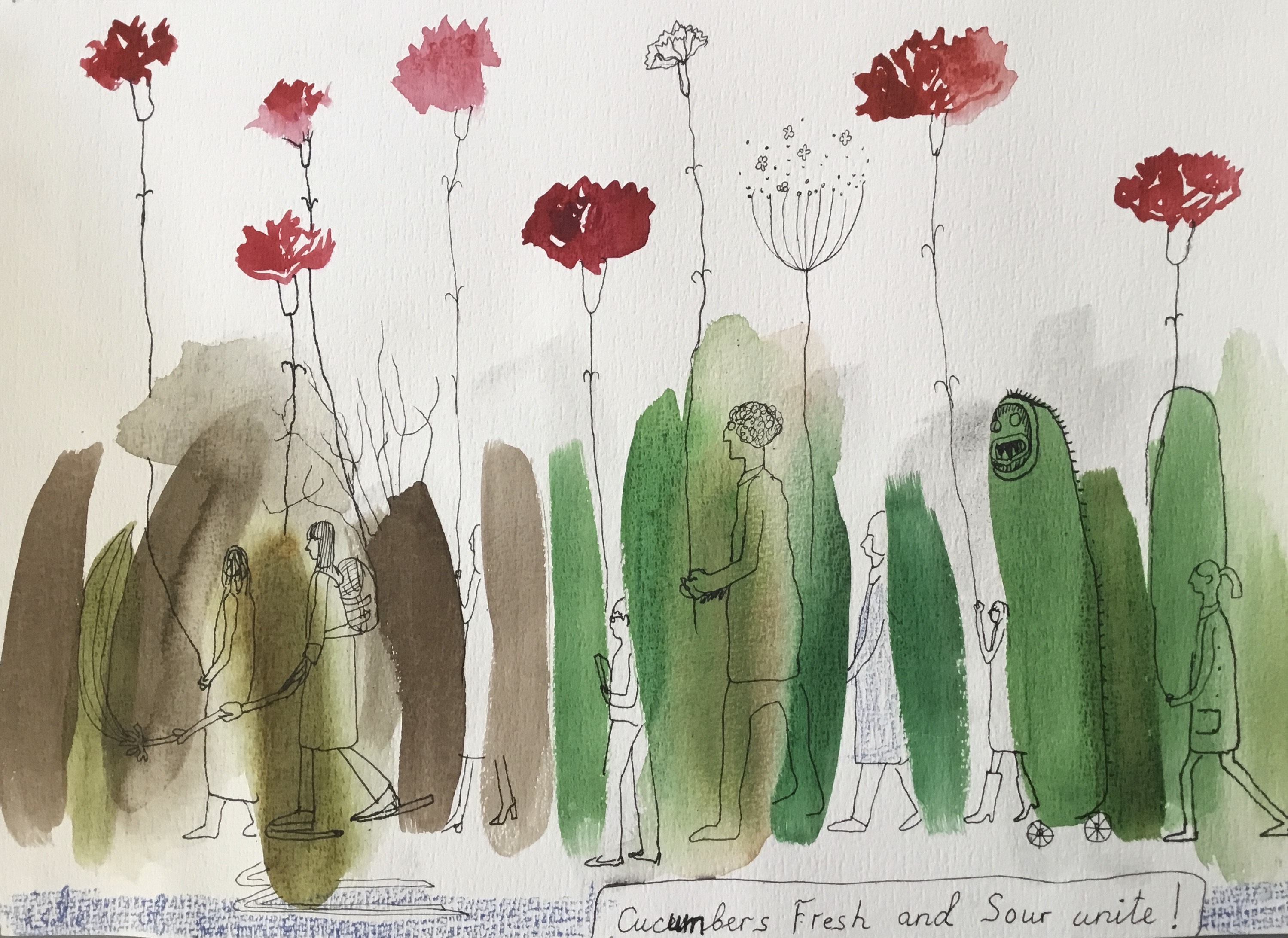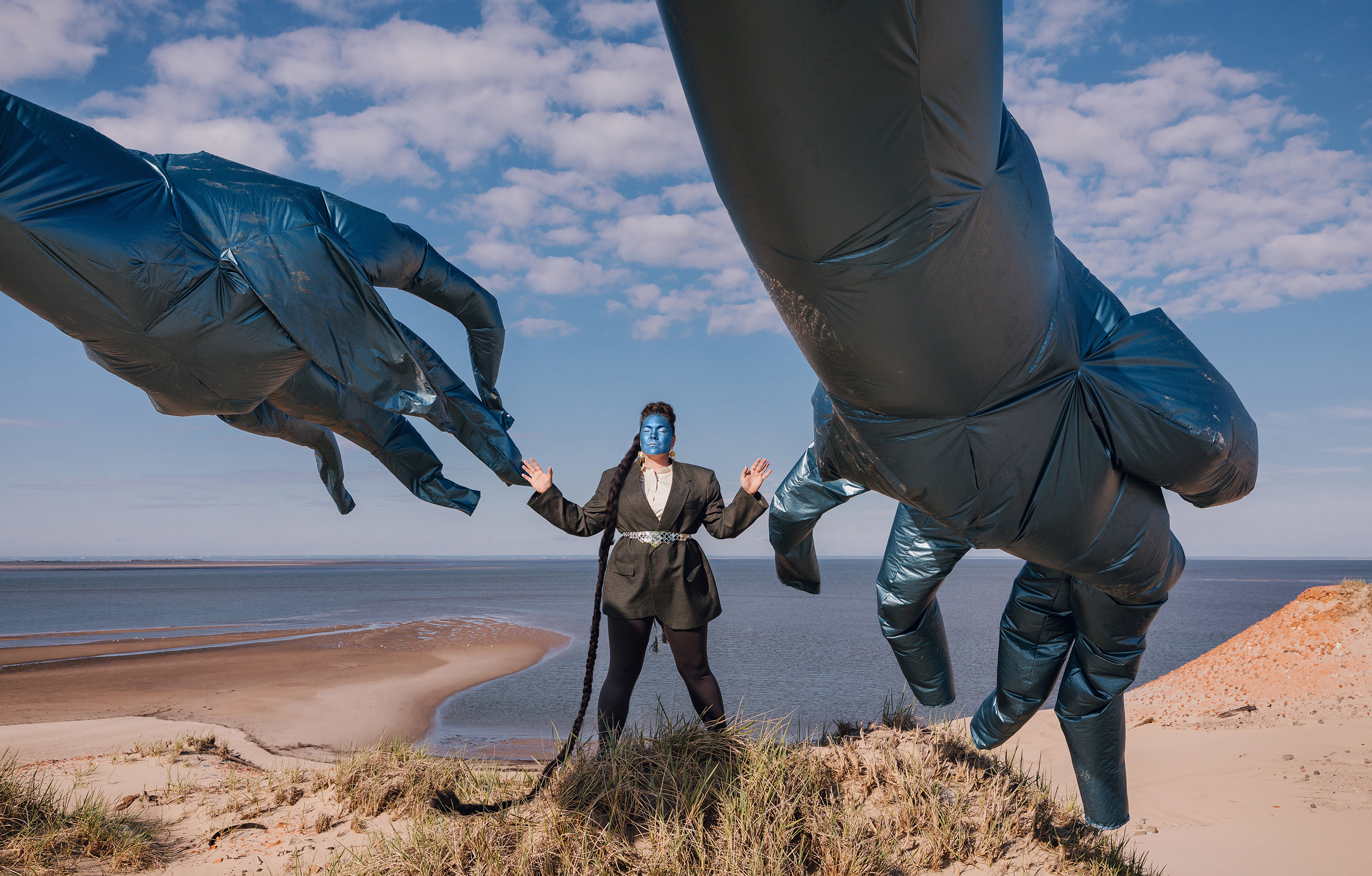When Gondola Engines Were Taken to Bits
Works by Russian artists that rethink carnival culture.
This exhibition mainly features new works by Russian artists, shown alongside a selection of works from the 1990s and 2000s. The show’s historical part explores how participants in a carnival can change how to present themselves through costumes and staged photographs. In 1990s Russia, these actions meant the previously unthinkable possibility of creating a new identity through a carnivalesque makeover.
When the New Academy interpreted the Metamorphoses of Apuleius, they used fantastical photo illustrations to bring up the liberating potential of ludic culture, addressing both the classic tradition and new technologies. The Golden Ass (1995) is considered to be the manifesto of neo-academism in Russia. This art movement, led by its ideologue Timur Novikov, announced its “path to the classics and beauty”, using novel techniques at the time, such as computer collage, photo processing and digital drawing.
Сoncept costumes by the Factory of Found Clothes are reflections of people’s inner world, their feelings and desires, hopes and fears. In her works, Gluklya (Natalia Pershina-Yakimanskaya) strives to return compassion to art and appoints the artist as a person’s assistant on the path of self-transformation. For her, Carnival is an empathy-generating opportunity to imagine onself in the place of another, a chance for the weak to find their voice and, with it, strength.

Courtesy of the artist
Yevgeny Antufyev shows a real fight in the exhibition space in a work that obeys the spectacle-driven rules of wrestling. Abstract concepts enter the arena to speak of contemporary humour and carnival culture, ready to kill each other in the name of justice and to satisfy the spectators' emotions.
In The Light of my Life*, Genda Fluid (Antonina Baever) translates into English one of the main songwriters of the 1990s, Arkady Slavorosov, the author of the eponymous hit written for Tatyana Bulanova. She attempts to see the lyrics from a different angle, raising the touching stories to a higher level.
In the work A Hundred Big Entrances Michel Portnoy explores the eponymous theatrical figure of speech. In this video, a performer keeps coming to the stage from behind a curtain, following and interpreting certain instructions that are being voiced. Every next instruction becomes more difficult and combines purely abstract notions and events from geography, history, sociology, psychology, and philosophy. The performer must switch artistic modes and move from between various territories as quickly as possible. This constant change of masks according to the game’s rules directly corresponds to the principles of carnival as formulated by M. M. Bakhtin.
Effigies of Tenuous Shape, a video work by Olga Chernysheva that focuses on what’s left at the end of urban celebrations, is a comment on the global pandemic, when any gathering of people is perceived as a threat.
The multi-part project by Ulyana Podkorytova Tamotka is a tribute to the folklore traditions of the Russian North (the Pomorye region that borders the Northern Ocean) and a contemporary tale about the future of nature and technology. The main character is dressed in wooden armour, reminiscent of ancient Russian architecture. She must perform an old Pomor spell to rouse the wind and restore the flow of a river, and she overcomes various obstacles on her path. The plot, comparable to modern superhero films, is inspired by the tales of the Pomor writers Stepan Pisakhov and Boris Shergin, and by the folk culture of the region, where traditions remain strong.

Photo by Pavel Smirnov
Catfish (18+) — an opera performance for 10 vocalists and an installation Natalia Pshenichnikova is dealing with the concept of “fakeness”. The author discusses the daily encounter with distorted truth and the catfishing phenomenon — when somebody uses other people’s photos and false information to present themselves on the Internet and social networks as a different, more attractive person. Costumes for performers are provided by Alexander Petlyura, the artist who pioneered vintage performative fashion.
Spectators are invited to take part in the recreation of the Esc* performance by the artist Ellina Gennadievna: a collective run using VRchat virtual reality technologies. This artistic gesture was used by the Escape group in its project Disappearance in 2000 and by Jiří Kovanda in an action from 1978. The artists were escapists in the literal sense of the word, taking to their heels when anyone tried to make contact with them. Participation is by prior registration and requires access to a computer running Windows 7, 8.1 and 10 or by presence in the exhibition space.
In a dance performance Corn Alphabet dance artist Tatyana Gordeyeva and scientist and ecologist Igor Polsky give a reading of a play by the dramatist Pavel Pryazhko. The play tells of the generation of our grandmothers, the decline of village culture and migration from the countryside to cities. Through the performance, Gordeyeva and Polsky bring the viewer new means of communication without the use of words. The body becomes the bearer of various kinds of knowledge, creating a potential for self-rediscovery.
A dance installation Plyastzy by Valentina Lutsenko is a choreographic study of the phenomenon of clownery and performance in the early Middle Ages, when a high spiritual culture co-existed with a low, semi-pagan culture of mockery and laughter. The authors compose their own story about such performers and their art, constructing a modern equivalent by means of games, music, dance and installation.
Anna Semenova- Gantz and Maria Markina in their performative voice installation Choirning present a collective ritual that treats mourning as a new form of solidarity. The viewer can choose to be participant or observer. “Choirning” is a neologism that combines the words “chorus” and “mourning”. The performance gives space to feelings that have been excluded from the pure-positive orientation of modern social life. The authors of the voice installation propose the reinstatement of mourning in the public space in the form of a ritual.
When Gondola Engines Were Taken to Bits — A Carnival in Four Acts invites its participants to reflect on the contemporary relevance of the idea of carnival as a universal celebration, one in which familiar rules are turned upside down and everyone can express their individuality in meaningful collective rituals. The four acts of the title are: an exhibition, a street procession, a rave and a series of stand-up performances.
* Video art by Genda Fluid (Antonina Baever) and Ellina Gennadievna are presented on TV Samsung Neo QLED screens
Water for the public programme participants is provided by Edis